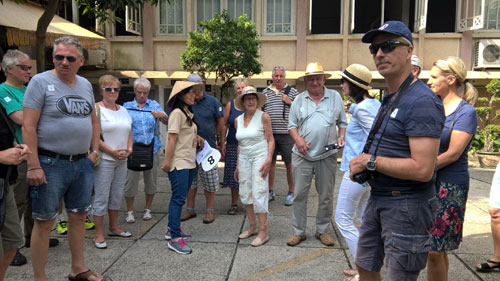Based on its 2017 success, Ho Chi Minh City aims to attract between seven and eight million international visitors and a whopping 29 million domestic visitors in 2018.

Tran Vinh Tuyen, Vice Chairman of the municipal People’s Committee, told the Vietnam News Agency (VNA) earlier this month that reaching this goal would be difficult, so the city must work to make its tourism sector more attractive.
Phan Xuan Anh, representative of HCM City-based cruise-line provider Tan Hong Co Ltd, told the HCM City Federation of Labour’s online portal that the region’s tourism prospects were looking positive as the number of tourists increased, but the city still needed to determine what its key attractions were.
He also argued that since more than 6.3 million international visitors to HCM City in 2017 were Chinese and Korean, there should be special travel services and planning to cater to this influx of guests to generate additional revenue, while maintaining a stable number of Western travellers.
Recently, he said, the HCM City Department of Tourism identified and developed a few featured tourism products with growth potential, such as street food, entertainment, folk arts and recreational health care.
HCM City would also focus on creating favourable investment and business mechanisms for hosting meetings, conventions and events, said Tuyen.
In order to meet the target this year, the city would have to invest in infrastructure, such as public transport, international terminals and luxurious accommodation.
Tuyen said it was necessary to expand tourism activities to each household, so that every person living in and outside the city could participate in tourism development.
For example, the behaviour and attitude of residents could also become tourism oriented, which would play an important role in creating a friendly and safe image of the city and Vietnam as a whole.
"The city must have a long-term, development strategy for its tourism,” said Vo Anh Tai, Deputy General Director of Saigontourist Travel Service Co.
Anh Tai said that although HCM City had a master plan for tourism development until 2030, due to a limited budget, the tourism department was still choosing consultative groups and reviewing overall strategy.
Nonetheless, Tuyen said he expected the department would finish a basic business and development plan by the Lunar New Year.
According to Xuan Anh, a major weakness in the city’s tourism industry, as assessed by tour-organising companies, was the lack of a development strategy.
Nguyen Quoc Ky, General Director of Vietravel, praised the city’s tourism target, but complained that key attractions had not yet been pin-pointed.
He argued that without carefully determined key products, it was difficult to market the city.
According to Ky, the tourism industry should change its approach to customers from passive to active. Recently, many new routes from the city to the countryside had been opened, but not directly marketed to travellers.
Ky said that it was necessary to set up supporting mechanisms and policies so that tour operators would find it easier to attract visitors.
Of course, he said he understood this would require coordination between local government, travel companies, international and domestic airlines, and other service providers.
According to a 2017 report on National Tourism Competitiveness Index by the World Economic Forum, the overall competitiveness ranking for Vietnam’s tourism industry is 67 out of 136.